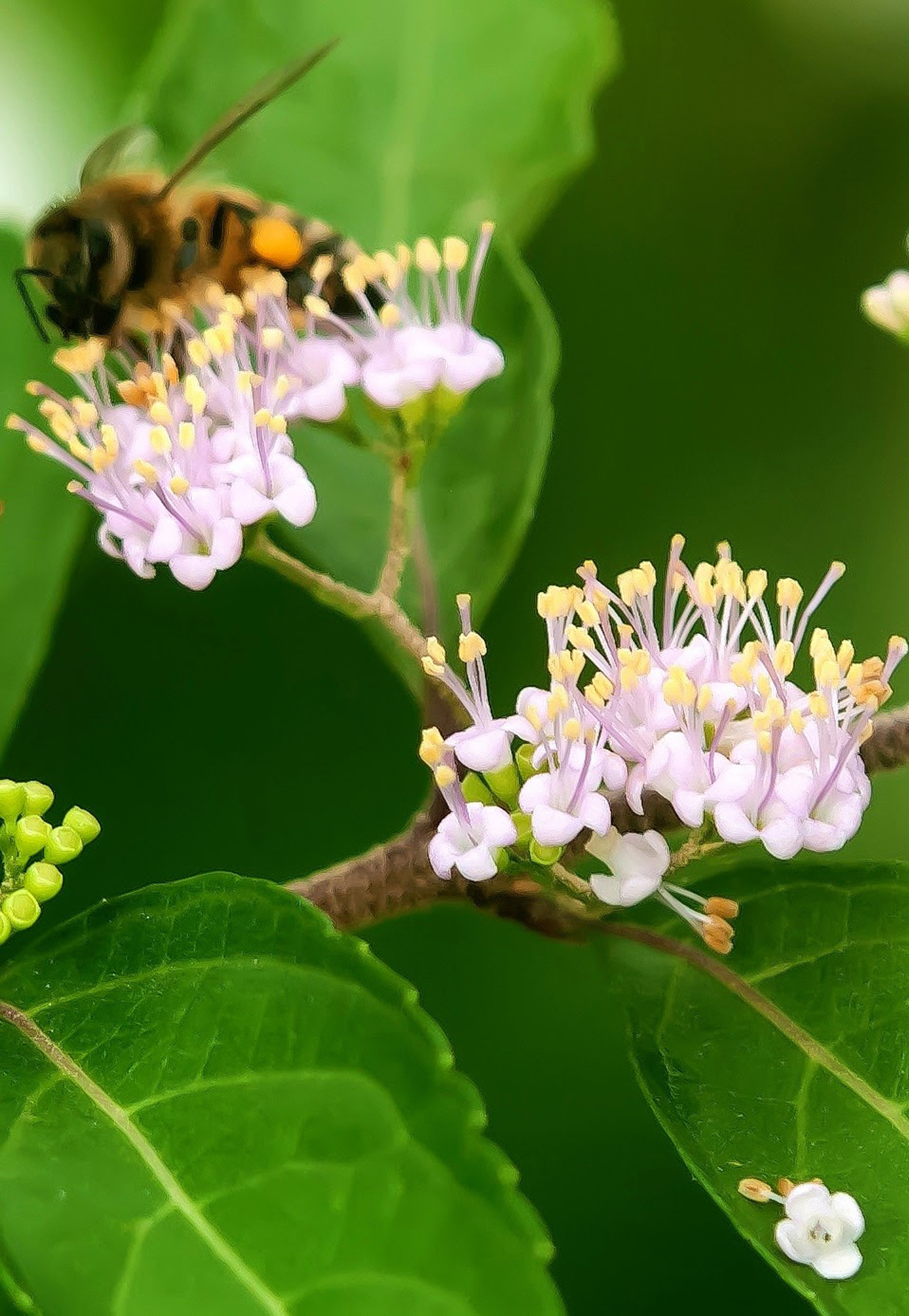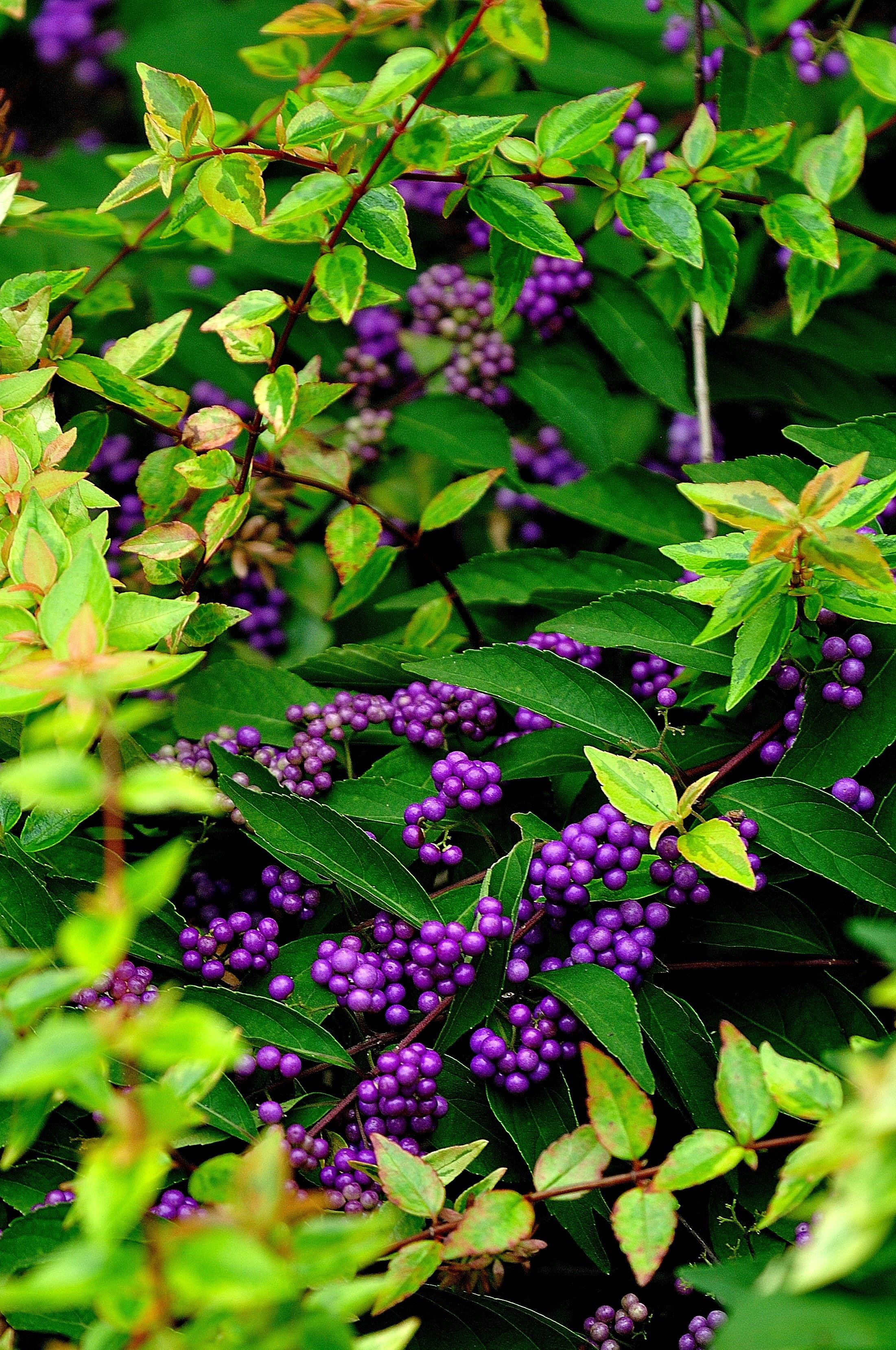Farm & Ranch
The Garden Guy — Coming into Rare and Colorful Beauty

By Norman Winter
All over the south, America’s most beautiful berry is stunning those who come across it in the wild. Those who have incorporated it into their landscape; however, are in a state of celebration. This berry is non-other than the American beautyberry, Callicarpa Americana.
In North Texas you’ll find it is native in Dallas, Tarrant, Denton, and Grayson Counties but is really not finicky on soil. Though it is native in 14 states, from Missouri, Tennessee to Virginia, Maryland and all states south from Texas to Florida, it has the common name French Mulberry. American beautyberry is an arching deciduous shrub that can reach five to eight feet in height.
Many gardeners are surprised to find it is in the verbena family. Like its other shrubby relatives, it is a pollinator magnet when in bloom. You really have to pay attention, though, to notice the intricately designed blooms as they tend to be hidden by leaves.
Amazingly, the blooms are quickly followed by hundreds of glistening berries.
The berries that catch our eye most often are those with the richest purple, a color fit for royalty. You’ll typically find them more prevalent in moist areas with richer soils of the forest floor but will work in the landscape in typical garden soils.
According to the USDA, the berries are eaten by over 40 species of birds. Mockingbirds, Brown Thrashers, American Robins and Eastern Towhees are a few of the notable birds you may find devouring the fruit and of even greater interest to North Texas farmers and ranchers is that it is relished by Bob White Quail.
To read more pick up a copy of the September 2018 NTFR issue. To subscribe call 940-872-5922.
Farm & Ranch
Ag Elsewhere: Wyoming

By Tressa Lawrence
Babies are tucked away in every nook and cranny. Many ranchers across Wyoming have baby animals popping up all over this time of year.
Farm & Ranch
Ag Elsewhere: Montana

By Lindsey Monk
Another load of grain in to keep feeding the calves until the green grass can really start popping.
Farm & Ranch
Meanwhile, Back at the Ranch….

By Rayford Pullen | [email protected]
Spring has sprung and hopefully the rains will continue where our country will heal from the previous droughts and our grasses will thrive. We are especially hopeful for the Panhandle of Texas where our neighbors and friends have been dealt a deadly blow to homes, ranges, livestock, and people. Keep them in your prayers as they will not be able to return to normal for many years if at all. Having lost their ability to benefit from this great cattle market is a double whammy for all of them.
Now is the time of year when we need to take care of business as it relates to our new calves that have been hitting the ground this spring. First and foremost is vaccinating for Blackleg followed by deworming with a white wormer and the IBR complex. Blackleg is a soil-born disease and with pastures extremely short this spring our calves have been grazing the green grass as soon as it shows itself, making them even more vulnerable to picking contaminates from the soil.
To read more, pick up a copy of the April issue of NTFR magazine. To subscribe by mail, call 940-872-5922.
-

 Country Lifestyles1 year ago
Country Lifestyles1 year agoScott & Stacey Schumacher: A Growth Mindset
-

 Equine7 months ago
Equine7 months agoThe Will to Win
-

 Country Lifestyles7 years ago
Country Lifestyles7 years agoStyle Your Profile – What your style cowboy hat says about you and new trends in 2017
-

 Country Lifestyles4 years ago
Country Lifestyles4 years agoAmber Crawford, Breakaway Roper
-

 HOME7 years ago
HOME7 years agoGrazing North Texas – Wilman Lovegrass
-

 Country Lifestyles7 years ago
Country Lifestyles7 years agoDecember 2016 Profile, Rusty Riddle – The Riddle Way
-

 Country Lifestyles8 years ago
Country Lifestyles8 years agoJune 2016 Profile – The man behind the mic: Bob Tallman
-

 Country Lifestyles8 years ago
Country Lifestyles8 years agoCowboy Culture with Clay Reid – Being a Man







